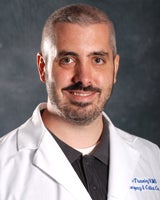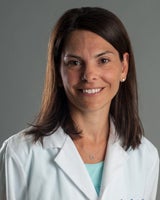Monkey’s Cross-country Journey Ends with a New Kidney… and Friend
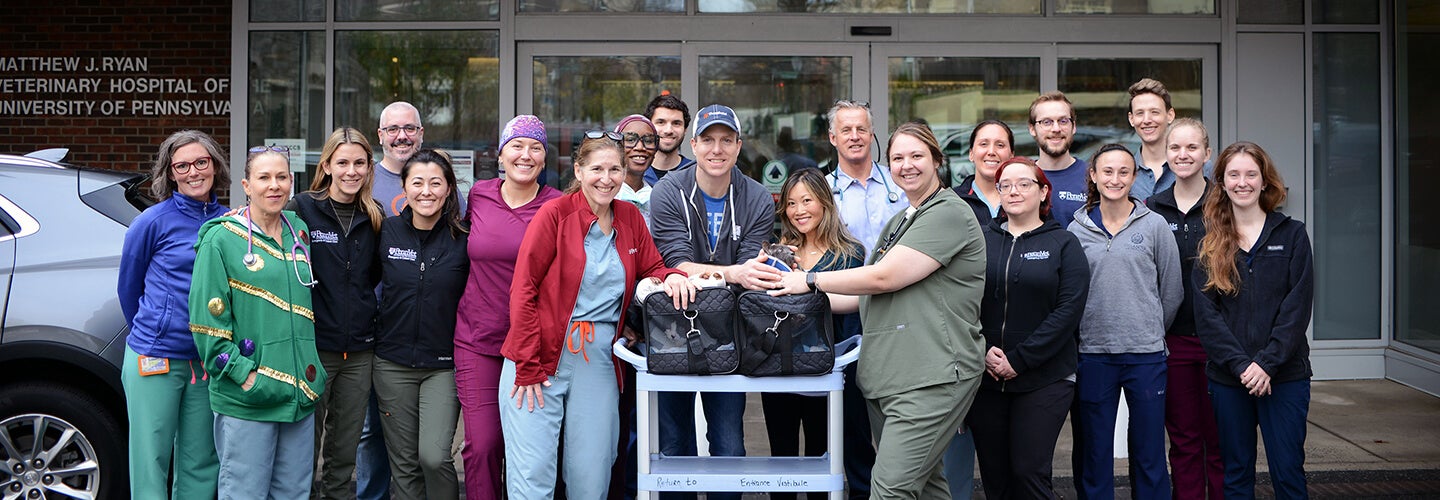
Faculty In This Story
Monkey is a people cat, the kind of kitty who eagerly greets his owners when they come home. He has been a little lovebug since Erik Palitsch and Angi Whitford adopted him as a kitten. But last fall, the Russian Blue stopped eating and lost his spark.
At seven years old, he was diagnosed with rapidly advancing late-stage chronic kidney disease. His veterinarian presented Palitsch and Whitford with end-of-life scenarios.
“We weren’t ready to let go and asked if there were any other options,” said Palitsch.
They found the answer at Penn Vet’s Ryan Hospital in Philadelphia, home to one of the world’s most advanced and comprehensive Advanced Urinary Care services. The program offers in-house renal transplantation; extracorporeal therapies, including hemodialysis; interventional radiology; minimally invasive endourological procedures; and more.
“Renal transplantation in cats is complex,” said Lillian Aronson, VMD, DACVS, professor of surgery, who established the program in 1998. “It requires microsurgical skill, specialized equipment, and careful coordination. Penn Vet has everything under one roof.”
Palitsch and Whitford picked up Monkey from the veterinarian and flew across the country.
“Transplantation can improve quality of life and chances for long-term survival for many cats with kidney disease,” explained Aronson. “Without the procedure, Monkey would have been completely dialysis dependent, which is unsustainable.”
Hemodialysis: No monkeying around in the race against time
Monkey arrived at Ryan Hospital just days before his surgery, but his health continued to deteriorate.

“He was on the edge of a knife, with declining kidney function and dangerous electrolyte imbalances,” said Vincent Thawley, VMD, DACVECC, associate professor of emergency and critical care. “He would need dialysis to get stable.”
Dana Clarke, VMD, DACVECC, associate professor of interventional radiology and a specialist in vascular access for small patients, placed the catheter. “This became his lifeline,” Thawley explained. “Once it was in, we started treatment.”
Penn Vet uses a dialysis system called Carpediem, which is designed for human newborns. It functions as an artificial kidney, cleaning the blood and removing waste products.
“Adult dialysis machines circulate too much of a cat’s blood volume—30 to 40 percent,” said Thawley. “With a machine made for smaller bodies, we may be able to keep that under 15 percent, making dialysis far safer for our patients.”
Monkey received hemodialysis every other day, snacking and napping through the long sessions. He was stable enough for surgery within a few days.
New kidney, new family member, new lease on life
The eight-hour transplantation took place in December. Aronson and her team meticulously transplanted a kidney from a donor cat to Monkey, working with vessels just one to two millimeters in diameter.
Monkey’s donor, originally named Tiny Tim, came through Penn Vet’s partnership with York County SPCA. In a win/win, the shelter provides healthy cats for transplantations, and the program provides a new home for the donor.
“We are just as concerned about the wellbeing of the donors,” said Aronson. “It’s non-negotiable that our transplantation clients adopt the donor cat, and we then follow the health of the donor and recipient for life.”
Both cats did well during and after the procedure.
Monkey’s new kidney began functioning almost immediately, and he was discharged a week later. In March, he had a slight scare when rising kidney values revealed scar tissue around the new kidney.
“It’s a correctable complication that sometimes occurs,” said Aronson.
Palitsch, Whitford, and Monkey jumped on a plane and returned to Ryan Hospital, where Aronson successfully removed the obstruction.
“Seeing Monkey go through such a complex experience was overwhelming,” said Whitford. “But the entire team at Penn Vet was incredible and so reassuring. Everyone was so skilled and compassionate. We’re grateful for how they cared for him—and for us!”
Monkey gets back to business
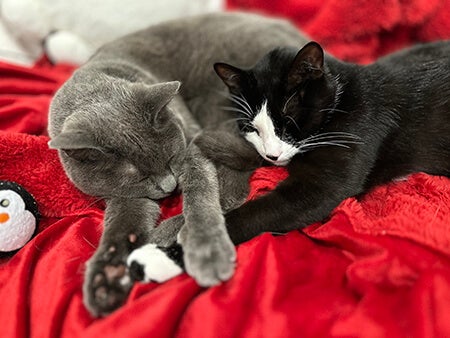
Today, life in the Palitsch-Whitford household is returning to normal. Monkey is rebounding to his energetic self—eating, playing, and greeting Palitsch and Whitford at the door. And Tiny Tim, now called Freckle, is settling into his new home.
“They’re still figuring each other out,” said Whitford. “We always remind Monkey that Freckle saved his life, so be nice!” Erica Reineke, VMD, DACVECC, professor of emergency and critical care, who performed Monkey’s final dialysis session before surgery, sees Monkey and Freckle as an embodiment of Penn Vet’s mission. “We designed this program for patients like Monkey—cases that are complex, fragile, but still full of possibility. It took every part of our team to get him through. And it worked.”
Related News
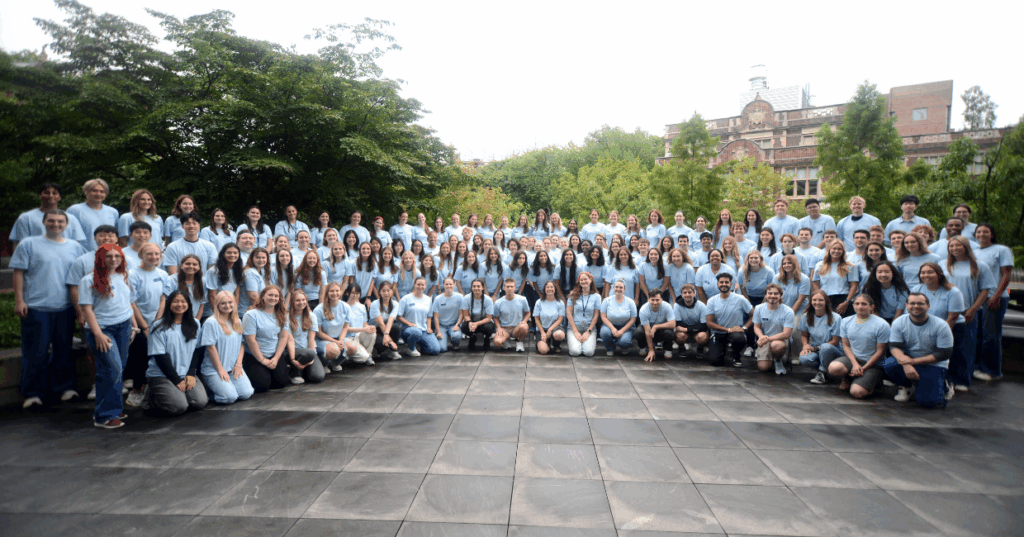

Breakthrough Discovery Reveals How Connection Between Mitochondrial Vulnerability and Neurovasculature Function Impacts Neuropsychiatric Disease
Research from University of Pennsylvania School of Veterinary Medicine and Children’s Hospital of Philadelphia suggests that repurposing a cholesterol drug may benefit 22qDS patients with neuropsychiatric disease
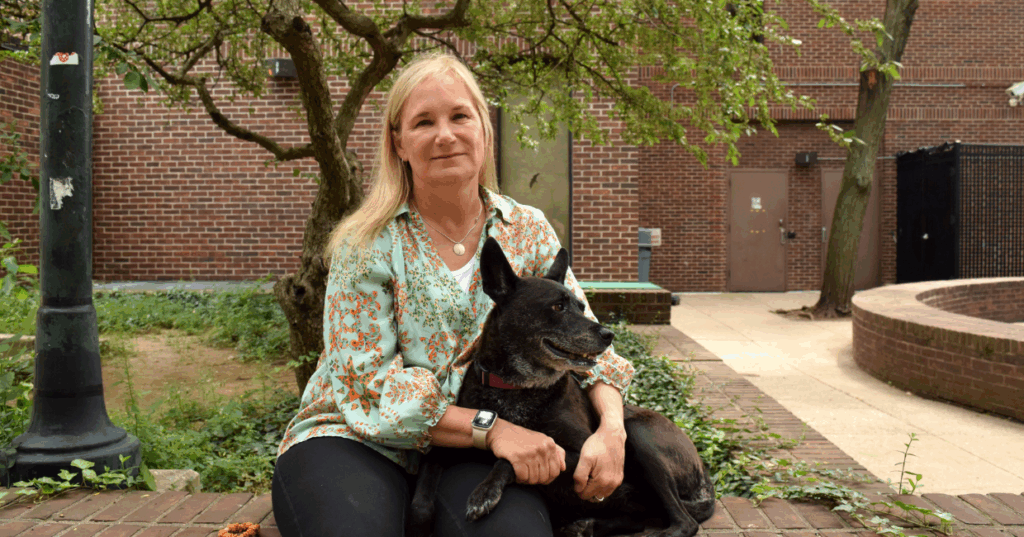
Penn Vet Teamwork Comes Through for a Dog with a Strong Will but a Sick Heart
Something about Litte Dove just wasn’t quite right. Even in her favorite Philly park with her favorite people, the usually plucky shepherd mix sat down abruptly in mid-walk.
About Penn Vet
Ranked among the top ten veterinary schools worldwide, the University of Pennsylvania School of Veterinary Medicine (Penn Vet) is a global leader in veterinary education, research, and clinical care. Founded in 1884, Penn Vet is the first veterinary school developed in association with a medical school. The school is a proud member of the One Health initiative, linking human, animal, and environmental health.
Penn Vet serves a diverse population of animals at its two campuses, which include extensive diagnostic and research laboratories. Ryan Hospital in Philadelphia provides care for dogs, cats, and other domestic/companion animals, handling more than 34,600 patient visits a year. New Bolton Center, Penn Vet’s large-animal hospital on nearly 700 acres in rural Kennett Square, PA, cares for horses and livestock/farm animals. The hospital handles more than 6,200 patient visits a year, while our Field Services have gone out on more than 5,500 farm service calls, treating some 18,700 patients at local farms. In addition, New Bolton Center’s campus includes a swine center, working dairy, and poultry unit that provide valuable research for the agriculture industry.


